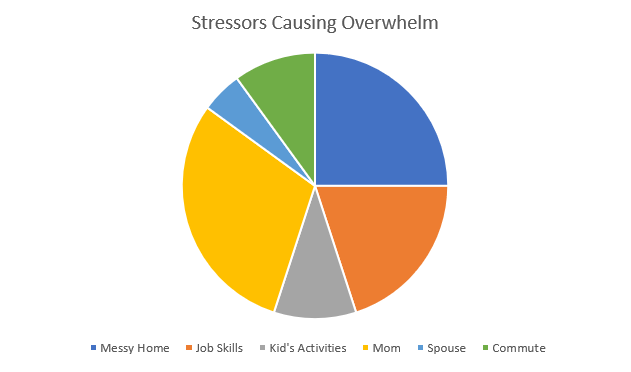
Enrich your life with a passion project.
A passion project is an activity or enterprise that you decide to take on—usually in your spare time–in order to gain some benefit for yourself. That is, it’s a challenge that you willingly embrace because you hope to gain something from it.
The list of benefits that you can gain from starting a passion project is long, and in this blog post I’m going to share 14 of them with you. To give you a heads up, these benefits include things such as having more fun, increasing your zest for life, and making a contribution to the world. Here we go.
14 Reasons to Start a Passion Project
We’re all busy, so if we’re going to add something else to our to do list, it really needs to be worth it. Am I right? (I can see all of you nodding your heads in agreement.) Well, here are 14 reasons why starting a passion project is most definitely worthy of your time, energy, and other resources:
1. To Increase Your Happiness
 Shawn Achor, PhD, is a positive psychologist and author of The Happiness Advantage: How a Positive Brain Fuels Success in Work and Life. He explains in his book that one way to increase your happiness is to increase your sense of control over your life.
Shawn Achor, PhD, is a positive psychologist and author of The Happiness Advantage: How a Positive Brain Fuels Success in Work and Life. He explains in his book that one way to increase your happiness is to increase your sense of control over your life.
Nonetheless, you may be currently going through a period of your life in which you feel you have little control over your daily activities. You can regain a feeling of control by starting a passion project.
After all, a passion project is something that you decide to do. It’s not a school assignment, or something your parents or a boss told you to do. It’s something that you’re doing just because you want to. You’re 100% in charge.
Look at the following:
- You decide what the project will be.
- It’s up to you to set a goal (or goals) for your passion project.
- You decide how big or how small the scope of your project will be.
- The standards are set by you.
- All deadlines are up to you.
- You create the plan you’re going to execute in order to complete your passion project.
- It’s up to you to determine whether you want to work on your passion project alone, or if you’re going to ask other people to join you.
- You decide when your passion project is done.
- It’s up to you to determine what success looks like for your passion project.
You’re in control of your passion project. And when you feel that you’re in control, you’re happier.
2. To Have Fun
Niklas Göke writes in his article on starting a passion project, one day at a time, that passion projects start with a simple statement:
“That sounds like fun.”
Even if you hope to make money from your passion project at some point, at first the financial possibilities of a passion project should be secondary. The first consideration should always be having fun.
Here at Daring to Live Fully I write often about the importance of having more fun. Now I have something else to add to my ongoing list of ways to have more fun: starting a passion project.
3. To Add Creativity to Your Life
A passion project could simply be about indulging your need to create. I love this quote by Kurt Vonnegut:
“Go into the arts. I’m not kidding. The arts are not a way to make a living. They are a very human way of making life more bearable. Practicing an art, no matter how well or badly, is a way to make your soul grow, for heaven’s sake. Sing in the shower. Dance to the radio. Tell stories. Write a poem to a friend, even a lousy poem. Do it as well as you possibly can. You will get an enormous reward. You will have created something.”

Give yourself permission to do something creative as your passion project. Draw, play an instrument, dance. . . it doesn’t matter if you do it badly. Just allow yourself to create.
4. To Add Entries to Your Portfolio
What if you want a job in tech–or a similar area– but you’re self-taught and haven’t landed any paying gigs yet? It’s very difficult to get a job if you don’t have a degree and previous work experience to show prospective employers. Nonetheless, all is not lost.
You can create a passion project that will allow you to add an entry to your portfolio. As an illustration, you can design a mock-up of a web site for your ideal client. Then, show prospective clients the mock-up (be upfront about the fact that it’s a mock-up and not something that you got paid for).
You can even create a whole branding package.
Likewise, if you’re an aspiring photographer you create a passion project that involves taking photos of all the lighthouses, abandoned buildings, or ice cream parlors in your town. Then, add the photographs to your portfolio.
You can do something similar for any creative medium. Build your portfolio through passion projects.
5. To Make Your Life More Meaningful
A while ago I wrote a blog post on the importance of having not just a happy life, but also a meaningful life. Right now you may feel that your life isn’t as meaningful as you would like for it to be. Your job pays the bills, but you’re not really doing anything that makes you feel as if you’re making a valuable contribution to the world.
If so, you can make your life more meaningful by starting a passion project. How do you want to make a difference in the world? Here are some ideas:
- Start a weekend workshop to help girls become more confident.
- Put up a free library for your community.
- Start a blog in which you teach others how to do something you’re good at.
And, who knows: your passion project may even become your legacy.
6. To Add Passion to Your Life
Here are some synonyms of the word “passion”: enthusiasm, motivation, and inspiration. Having a passion project can add all of these to your life. It will also do all of the following for you:
- Foster your well-being by doing something that lights you up.
- Give you a reason to jump out of bed each morning.
- It will make you feel good about yourself.
- It will nourish your spirit.
In addition, this passion, enthusiasm, motivation, and inspiration will spill over to other areas of your life. Having a passion project will add zest to your life.
7. To Apply Your Strengths and/or Talents.
Ideally, your primary occupation should allow you to apply your strengths and/or talents. However, this isn’t always the case. If you feel that you’re not currently getting the opportunity to showcase your strengths, you can do so through a passion project.
Pick something that you’re exceptionally good at—such as public speaking, visual thinking, or social intelligence—and come up with a passion project that will allow you to use those strengths.
8. To Create Your Own Opportunities
Instead of sitting there passively waiting for opportunity to knock on your door, get out there and create your own opportunity through a passion project. Look at the following:
- If you want to get into the cooking business—become a personal chef, own a restaurant, teach others to cook, and so on—start a pop-up restaurant in your home that serves dinner on Sundays.
- Suppose you want to be a mystery writer–write a mystery novel and publish it as a Kindle book on Amazon.
- Do you want to be a singer? Upload a video to YouTube of you singing every week for a year.
Ask yourself: how can I create my own opportunity? Then, turn that into a passion project.
9. To Learn New Skills
It’s difficult to learn a new skill in a vacuum. It’s much easier to learn a skill if you give yourself a project to work on. As an illustration, suppose you want to learn to draw. Ask yourself what project you could give yourself to make learning this skill more practical.
Here’s an example:
- If you want to learn to draw, create your own coloring book. Coloring books are all the rage these days — they help you unwind, de-stress, reconnect with your inner child, bladdy-bladdy-blah. Instead of buying a coloring book, ask yourself what you want to color. Then draw it, and color it! I’m doing this, by the way.
10. Set Out On A New Career Path
Perhaps you’ve been telling yourself that you’re ready to try a different career path. But you’re not sure which path to pick. That’s where the passion project comes in.
Make a list of all the careers you’ve been wondering about. Then, for each of them, create a project that will allow you to sample what it would like to be in that career.
11. Become More Interesting (and More Awesome)
As I explain in my post on how to be more interesting, interesting people have interesting things going on in their lives. If there’s nothing interesting going on in your life at the moment—we’ve all been there—make your life more interesting with a passion project.
Look at the following conversation:
- Friend: “So, what’s going on in your life?”
- You: “Not much. Same old, same old.”
Let’s face it, from the conversation above, you sound boring.
Now look at this conversation:
- Friend: “Hey, what’s new?”
- You: “I’m making scented soaps at night and selling them at the farmer’s market on Saturdays.”
Now you sound interesting (and awesome).
12. To Make Money
You don’t have to set a goal of making money from your passion project, but you most definitely can. In fact, you can choose to go from passion project, to side gig, to full-time.
If your passion project is going to make you money, you need to think like a business person:
- Create a business plan.
- Decide who your target market will be.
- How will you brand yourself?
- How will you find customers?
- What’s your marketing plan?
- What will you charge?
- Do you need financing?
Imagine making money by doing something you’re passionate about. Sounds wonderful, doesn’t it? A passion project can get you there.
13. As a 30-Day Challenge
I love giving myself 30-day challenges. You don’t have to devote a lot of time to them and, in just 30 days, you have something concrete to show for your efforts. A passion project can be a simple 30-day challenge.
As an illustration, Kasey Mahoney is a designer who wanted to help his nephew learn the alphabet. He challenged himself to draw a letter a day until the project was complete. It allowed him to combine his love of illustration and design, and help his nephew learn.
14. As a 365 Project
Your passion project can also take on the shape of a 365 Project. A 365 project is usually started at the beginning of a new year (but it doesn’t have to). It consists of achieving a goal by taking a small step toward the achievement of said goal every day for a year.
As an illustration, Brian E. Denton decided that he was going to blog about a chapter of Tolstoy’s masterpiece, War and Peace, every day for a year (the book has roughly 365 chapters). Then he took the end result and turned it into an eBook.
Now he can say that he’s written an eBook about his favorite book of all time. I’m not sure if he called it a passion project, but it certainly looks like a passion project to me.
Quick Overview of How to Start a Passion Project
Here’s a quick overview of the steps you need to take in order to start a passion project:
1. Decide On The Benefits – Which of the 14 benefits above do you want to derive from your passion project? List them.
2. Brainstorm Passion Project Ideas. Set a timer for 15 minutes and brainstorm all the possible passion project ideas you can come up with which would allow you to get the benefits you listed in Step 1 above.
3. Commit to One Passion Project. Take a look at all of the ideas that you came up with during your brainstorming session and commit to one.
4. Set a Goal. Notice the word “project” in the term “passion project”. A project has a goal that you want to achieve. Start by setting a small goal. Then, when you achieve it, you can set another, bigger goal.
5. Make Time for Your Passion Project. If you selected the right passion project, and you set a goal that excites you, coming up with the time to work on your passion project should be a lot more doable than you probably think that it is right now.
The best strategy I’ve found for making the time to work on my passion projects is to set aside one-hour-a-day. I recommend you do the same.
6. Create Accountability. One of the best ways to create accountability for your passion project is to start a blog which you use to document your journey. Then, share your blog posts on social media.
Having a community cheering you on to complete your passion project is a great way to make yourself accountable.
7. Just Start. There will never be a perfect time to begin your passion project, and there are no steps you can take to make sure that you will not make mistakes as you go along. So just start.
You’ll probably want to begin by doing research. That’s a good idea. However, make sure that you don’t get stuck at the research stage. Begin implementing what you learn during the research stage as fast as you can.
Conclusion
I hope I’ve convinced you to consider the idea of starting a passion project. Starting one has the potential to change your life. Live your best life by starting a passion project.













Related Posts:

 1. What was the best part of the day?
1. What was the best part of the day?


























 Marelisa Fabrega is a lawyer and entrepreneur. She holds a Bachelor of Science in Business Administration from Georgetown University in Washington, D.C., as well as a Juris Doctor from the Georgetown University Law Center. You can learn more about her
Marelisa Fabrega is a lawyer and entrepreneur. She holds a Bachelor of Science in Business Administration from Georgetown University in Washington, D.C., as well as a Juris Doctor from the Georgetown University Law Center. You can learn more about her 





